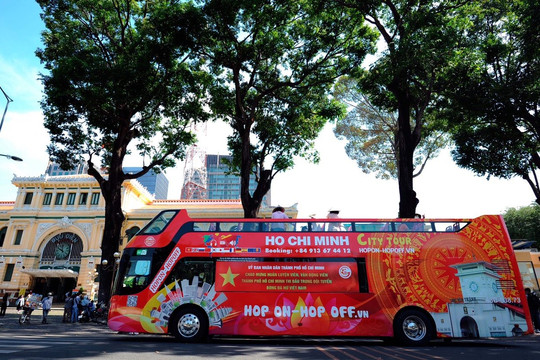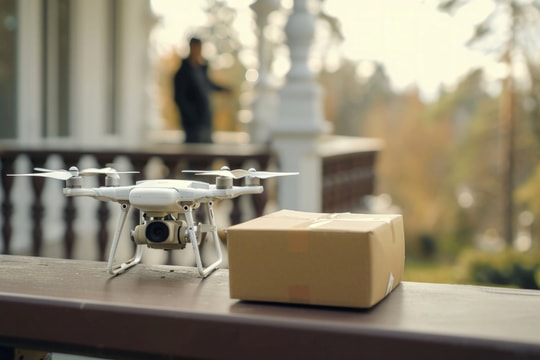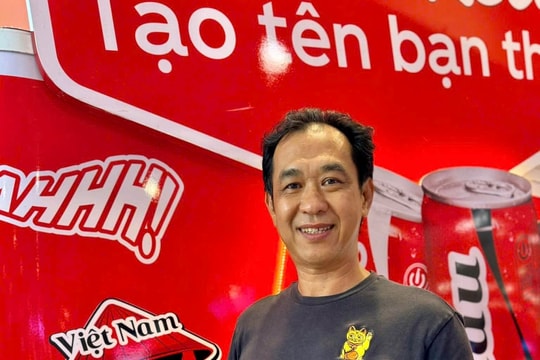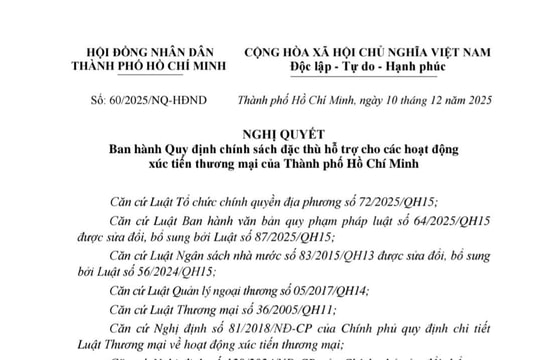
Although the graphic design field has played a significant role in creating a city's visual identity, graphic design as a stand-alone profession will not be considered as an effective involvement in city branding development. In order to generate lasting and effective city branding, graphic designers should be encouraged to actively and thoroughly cooperate with other disciplines. City branding has grown to be acknowledged as critical to a city's tourism economy, and graphic designers have been separated from the city branding team hierarchy in order to solely serve an outcome, rather than being viewed as an integral component of the whole city branding process.
This will be a guideline for city branding development that is beneficial for city governments, place marketers, graphic designer educators and students that are interested in developing successful city branding strategies.
City branding should be a collaborative project between the city councils, brand strategist, graphic designers and local communities to make it successful and attain its full potential.
Let’s take a look of examples of the successful city branding in the world:
Melbourne, Australia: The bold “M” of Melbourne in 2009
One year after the rebrand, Melbourne’s gross regional product had grown by 6%. Three years later, and over-night visitors had increased by 4.5%, and Melbourne’s tourism was valued at $15.2 billion. 10 years down the line, and the city was ranked as the second most livable city in the world by the Economists’ Global Livability Ranking for 2019.
Before designing the identity, Landor & Fitch team did an audit of the opinions of local business owners and community representatives about the city. This “M” logo comes in a range of colorful presentations to express the diversity of Melbourne’s assets and entities (Melbourne: Designing a Flexible and Future-Focused Image 2010).
Amsterdam, Netherlands in 2004
The idea behind the rebrand was to show people that Amsterdam is a great place to live and work. The city’s previous slogans such as “Amsterdam Has It” and “Small City, Big Business” were all a bit too vague. The “I amsterdam” concept and identity has a great recognizable quality.
With tourism on the rise and business booming, Amsterdam has re-established itself among the top five European cities based on brand strength and cultural 'merit'. In fact, according to saffron, Amsterdam’s brand is actually better than their assets predict. To those who visited the city, the letters made an indelible impression on visitors to the city, almost all of which are covered with pictures of the city's red and white logo. I Amsterdam has become not only a part of the cultural identity, but also a landmark.
People love the letters. They’re photographed thousands of times a day. That in itself is a success.
The letters were installed in 2005 as part of the city’s rebranding campaign. By now, the sculpture is the city’s most photographed item, being photographed over 8,000 times on a sunny day.
Collaboration on Social medias
Visual user-generated content such as tourist photography plays a particularly important role as social media is increasingly based on visual.
In 2004, the “I Amsterdam” sculpture elegantly captures the information of place in a meaningful way. By touching, climbing, and photographing the sculptures, tourists can literally touch and feel the brand which is considered as abstract and intangible. This brings the brand to life and makes interactions fun.

Target audience: Shopper, adventure, experimentalist, socialist,...
These people are referred to as “the curious class” because they don’t identify themselves by age, but rather by what they do outside of their regular routine of employment, school, or having a family. With that time the curious class enjoys seeking out new experiences to keep their social life intriguing and surprising. They derive intellectual sustenance from exploration. They constantly on the alert for what is going to happen next. Their obstacle to exploration is the comfort and routine of daily life.
There are several events to promote a city by the traditions of the city itself. For example, the Wagah Border Ceremony or the Beating Retreat Ceremony, held every day, is the prime attraction.
The ceremonial of lowering the flags at the Attari-Wagah border has been a regular military procedure for Indian and Pakistani security troops since 1959. Every evening, shortly before sunset, troops from India and Pakistan gather at this border checkpoint for a 30-minute exhibition of military friendship and showmanship. This ceremony comprises the closing of the international gates and lowering of each nations' flags. The Indian Border Security Force and Pakistan Rangers held the flag ceremony.
People also partake in entertainment to show their national pride to the hundreds of visitors that come here every day. During the build-up to the ceremony, the audience chants the Indian national anthem, applauds, and performs Bollywood-style dancing to Hindi tunes.
The Wagah border is visited by people from both sides. On weekends, the gathering is larger, with people sitting in the stands and cheering the troops conducting the ritual. Seating arrangements have been made for visitors to view the ceremony near Lahore City District.
Let’s take a look of the most successful city branding in Vietnam:
Da Nang city is the greatest examples for other metropolitan cities in Vietnam regarding city branding. The plan grasps all the techniques and methods into their procedures.

APEC Park, next to Han river, is the tourist attraction of Da Nang City. Photo by: Tran Le Lam
This creates the best and the most opportunities in attract a lot of attention in both domestic and international markets.
After more than 8 months of planning and implementation (July 13, 2013 - March 20, 2014), on April 30, the Committee of Da Nang Tourism Logo & Slogan Contest announced that the author's design of Code 168 has officially surpassed 1004 valid entries by 512 designers from 38 provinces and cities across the country to win the first prize of the contest “Logo & Slogan Danang Tourism”.
The contest aims to build the Da Nang tourism brand identity system, in which the logo and slogan will promote a more professional tourism image of the city not only for tourists, but also for businessmen and investors into this city.
Bought, owned and earned media channels
An online travel expo is the solution to provide an excellent opportunity for tourism businesses to showcase their products and services at this e-commerce expo. That was one of the greatest achievements of the digital transformation in promotion work in the current era affected by the Covid-19 epidemic, digital transformation is still a trend that cannot be ignored.
The 5 cubes in the logo represent the 5 mountains of the "Nam Thien scenic" Ngu Hanh Son - one of the profound symbols of Da Nang tourism. The 5 main colors of these 5 cubes are all bright colors about a young, dynamic city.
The name “DANANG” and the slogan “Fantasticity!”, forming a tight and complete unity. This slogan is a combination of the words "Fantastic" and "city".
This campaign of Danang city is the one that applied all the channels they could afford and even more than the M logo of Melbourne.
Da Nang was ranked at the top of the list of 10 brightest destinations in the world for 2015 voted by the world-famous US travel website TripAdvisor. On the TripAdvisor, Da Nang had 122 hotels, 203 restaurants, and 74 destinations, the highest number of visitors compared to other top travel destinations in 2015.
The APEC Summit 2017 was held for the fourth consecutive year, most recently in Danang. The World Travel Awards 2018 not only affirms the class and charm of the InterContinental Danang Sun Peninsula Resort, but also proves that Da Nang has become more integrated and more international.
Another successful city branding project in Vietnam is Ho Chi Minh City:
The Vibrant Ho Chi Minh City campaign was the first ever destination branding strategy for the city in 2011. The city is modern and diverse in culture with friendly citizens. The authorities have invested a large amount of effort on digitalizing technology to promote this dynamic city such as websites, applications, 3D technology for VR travelling.

In order to encourage more travel intentions into the city, this website keeps reminding everyone with the statistics from eye-catching tittle articles such as “Hottest cities for solo travellers” or “The world’s 100 greatest places” provided from credential source like Lonelyplanet and TripAdvisor.
Connect with businesses who offer experiences will be the greatest and the most popular method to promote a city's culture.
The Hop-on-Hop-off bus operates around transports tourists to the city’s famous attractions within the route. Transports and tourism are interdependent; and the role of transportation in its operation is significant. The number of visitors to tourist spots will increase and buses will become more popular as there are destinations on the entire circulation route. This is the result of a mutually beneficial approach where both sides work together to meet their interests and maximize value creation.
Overall assessment:
In recent years, Da Nang and Ho Chi Minh City have progress well with a rapid increase in the number of visitors after the rebranding plan. The attractiveness of resources, infrastructure and service facilities to serve tourists are well delivered to both domestic and international market.
At present, both cities have great advantages in terms of facilities, natural conditions and suitable service quality to meet the needs of international tourists traveling for the purpose of official tourism. MICE) or an international political - economic - cultural - sports event.
They have been implementing market research, applying information technology for long-term market information collection; building an application to support tourists with better location-based interaction, combining the journey tracking system and service evaluation to collect a database of destination reviews; continue to develop tourism websites, improve and perfect English pages for use in international markets, expand basic information pages for languages of key markets; strengthen local promotion; organize promotional campaigns about M.I.C.E tourism in key international markets…



.png)
.png)
.png)


.png)
.png)






.png)

